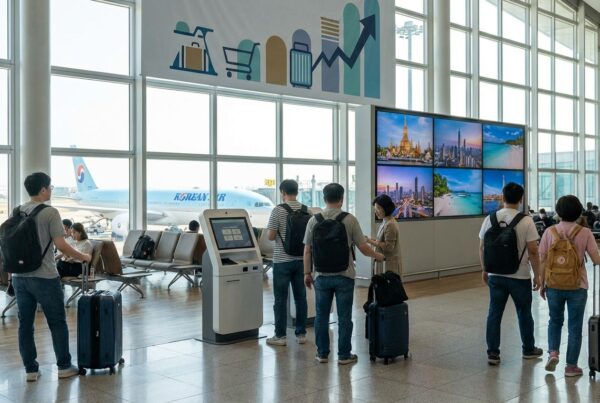Air France and Corsair are taking a new approach, opting to operate theMoroccan airspace located between Algeria and Mali. This strategic decision reduces the distance flown, optimizes flight safety and facilitates exchanges between regions. By choosing this route, the two airlines are demonstrating their expertise in managing air corridors, while reinforcing their commitment to quality services. This innovative choice opens up new commercial and logistical prospects, helping to boost the air transport sector and assert their position as industry leaders. These developments stimulate international competition.
The strategic decision to Air France and Corsair to use theMoroccan airspace in the area between theAlgeria and the Mali marks an important step in the optimization of these airlines' flight routes. This operation, combining modernity and efficiency, is part of a repositioning of air networks and a reorganization of communication channels.
Context and strategic issues
Against a backdrop of increasing competition and economic pressures, trajectory optimization remains a priority for many airlines. By choosingMoroccan airspaceboth Air France that Corsair are looking to reduce flight distances and benefit from a flexible, modern air corridor. Not only does this mean shorter journey times, it also means better air traffic management in a region undergoing rapid change.
Route optimization and operational benefits
The implementation of this new trajectory is based on an in-depth analysis of operational benefits. By accessing a airspace Thanks to optimized management, both airlines can look forward to reduced fuel consumption and lower emissions, thus contributing to a greener approach to air navigation. This initiative testifies to a strong commitment to innovation and optimization of resources, responding to the environmental and economic demands of the sector.
Economic and regional impact
The adoption of theMoroccan airspace should have positive economic spin-offs for all parties involved. On the one hand, airlines benefit from a shorter itinerary and easier flight planning, while on the other, the Moroccan authorities see their position as a key player in regional air transit strengthened. The integration of this strategic zone will boost trade and tourism between North Africa and sub-Saharan Africa.
Technical aspects and air safety
At the heart of this new strategy, infrastructures and control systems play a decisive role. The modernization of navigation systems, combined with strict safety rules, guarantees constant flight monitoring and optimum responsiveness in the event of unforeseen events. This system, validated by the relevant authorities, ensures a high level of safety that inspires confidence in airlines and passengers alike.
Impact on comments management and subscriber experience
Alongside technical innovations, some platforms dedicated to aeronautical information now offer an enhanced user experience for their subscribers. Subscribers enjoy smooth, banner-free browsing, thanks to an innovative hidden advertisingThis ensures uninterrupted reading of content. What's more, the pseudonymization system, validated from an e-mail address, reinforces the reliability of interactions and enables the publication of instant feedback for subscribers, ensuring immediate and secure exchange dynamics.
Future prospects for the airline industry
The adoption of new air routes, such as theMoroccan airspace paves the way for future innovations in international traffic management. The success of this approach could encourage other airlines to explore similar routes, thereby consolidating regional integration and boosting the sector's competitiveness. Each route adjustment bears witness to our determination to reconcile economic performance with respect for environmental standards.
Comparison of airspace use strategies
| Path selection | Using theMoroccan airspace to optimize direct routes. |
| Flight time optimization | Significant reduction in journey times between Algeria and Mali. |
| Cost reduction | A fuel-saving approach. |
| Security | Strict compliance with standards aeronautical established by the authorities. |
| Environmental impact | Direct trajectories to limit pollutant emissions. |
| Operational flexibility | Quickly adaptable to changing flight conditions. |
| Bilateral agreements | Strategy aligned with the regional policies of Morocco, Algeria and Mali. |
| Image de marque | An innovative approach that strengthens their position in the air transport market. |
| Passenger satisfaction | Improved flight punctuality and comfort. |




